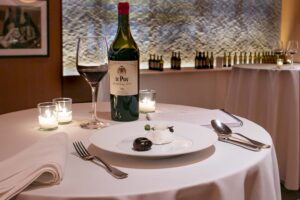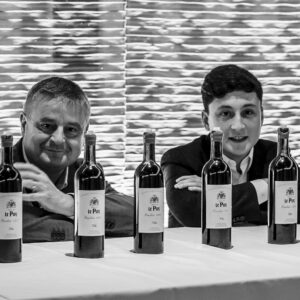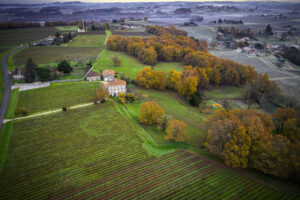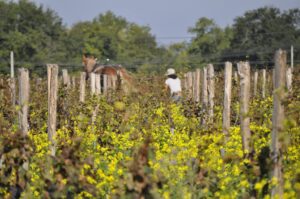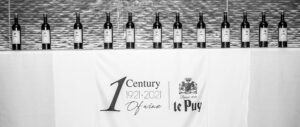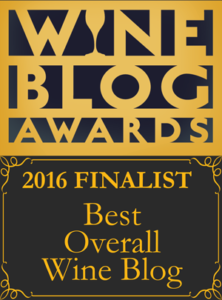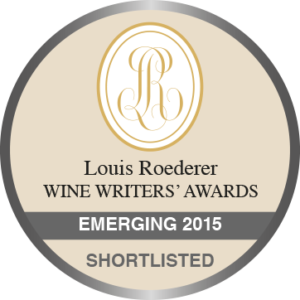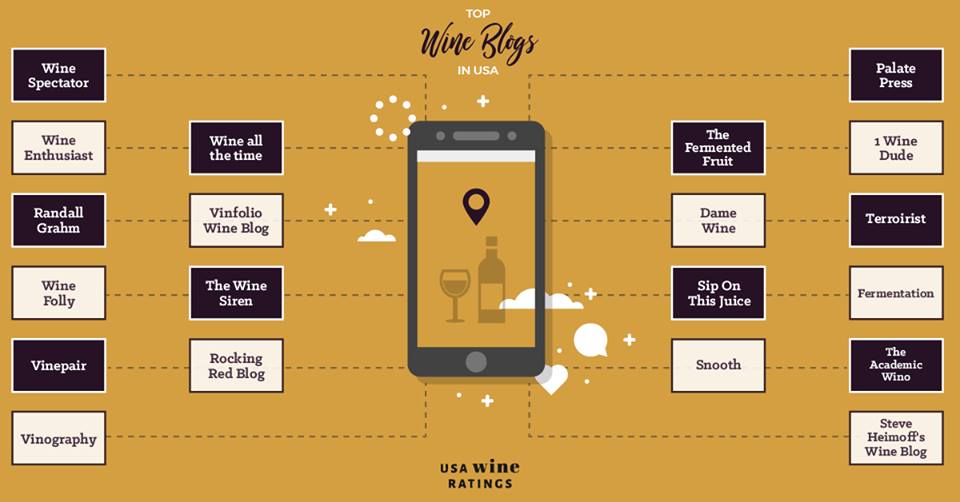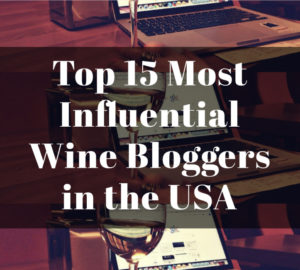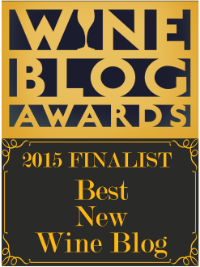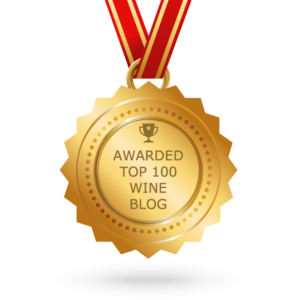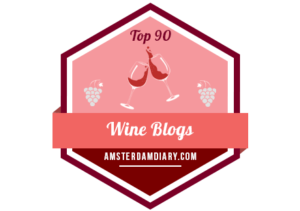The warm wood panels, rippled blue walls and the glow of the amber-colored lights gave an overwhelming feeling of tranquility as wine trade from all over the world came to Le Bernardin Privé for an epic wine tasting that spanned a century. A unique wine producer, Château Le Puy, from the Right Bank of the Bordeaux wine region, was illustrating how their over 400 years of organic grape growing and natural winemaking practices produce outstanding wines with a distinctive sense of place that can stand the test of time – even past 100 years.
A woman entering the room stopped in her tracks as one of the most glorious sights she had ever seen was presented: an endless line of wines ranging several decades from a well-admired producer. At first, she took a double-take as she couldn’t believe what she saw with her own eyes, a 1921 vintage! The very site of such a vintage started to make her giddy with anticipation. As the wine was poured into her glass, its pale garnet color with orange hues let her know that this was indeed a significantly older wine. “I’m going to have to swirl this wine for several minutes,” she thought to herself, as she suspected a lot of funk from a centenarian wine, and so, she would have to swirl her glass fiercely for it to blow off. But no, to her complete delight, the nose immediately beckoned to her with energetic and bright notes such as red cherries and cardamom spice and the palate was even more spectacular with the silkiest texture that she had experienced from a Bordeaux wine. However, this 100-year-old beauty still had all the benefits of age such as the complex aromatic layers of earth and cigar box with a finish that was so delicately enchanting that it took her breath away.
As she picked up the 1921 bottle, she stood there awestruck by the very notion that not only was she holding a stunning bottle of wine but it was a wine made by people who had long passed and who lived during such a different time.
1921 Vintage
Today, Le Puy is co-owned by family member and winemaker Pascal Amoreau and as he stood there after the epic century tasting with his son by his side, he showed gratitude to his family lineage, such as his great-grandfather, Jean Amoreau, for never succumbing to the temptation of using chemicals or fertilizers in their vineyards. It was after World War I, which was plagued with brutal combat under horrific conditions, and Jean found himself in a deep depression before the start of the 1921 growing season as the stock market crashed and wiped out the family’s total savings. He blamed himself as he should have known that the times were too unstable but his smooth-talking banker had won over his trust.
Jean’s wife sold beans from her garden to help the family out and one day she took a more prominent role in becoming the winemaker when all the men enlisted in the army for World War II. But during that time, Jean could not even imagine another colossal war or that things could get even worse for him and his family. The good growing season for the wine grapes lifted his spirits and the warm summer encouraged him to spend as much time outside as possible which came in handy as he hunted for game to keep the family going without the safety net of savings. Amazingly, he never buckled to try the easier route of using chemicals once they became available after the Second World War as his wine Le Puy was cherished for its “medicinal” properties and out of the medicinal wines in the area, it was considered the highest quality. Over 40 years later, in 1964, Jean’s son helped establish an organization that pioneered agro-biology and biodynamics in France, sticking to biodynamics for decades even when such practices were ridiculed. But the Amoreau family upheld the values of practicing biodynamics1.
Château Le Puy’s Commitment to Terroir
Le Puy’s fierce commitment to the expression of terroir, sense of place, in their wines goes against the general preconceptions of what Bordeaux mainly emphasizes, such as the name of the château or the larger sub-region (a.k.a. appellation). The specific vineyards, many times, do not take center stage. Harold Langlais, a partner with the Amoreau family in running Château Le Puy, illustrated this point by saying that they always have someone coming by their property asking why they don’t have a sign with the name of the château on it. And it is because Le Puy is first and foremost about the vineyard being the star, hence, why they do not focus too much on their name.
The vineyards of Le Puy are located on a limestone rock plateau just east of Saint-Émilion and Pomerol and the limestone does a good job of absorbing water, so during hot temperatures, they still have a good natural water supply, which allows for transpiration2, cooling the microclimate within the canopy of the vines. Interestingly, the châteaux that produced fresh wines during the extraordinarily hot vintage of 2003 in Bordeaux had soils that retained water. But making sure to work naturally in the vineyards is not enough for Le Puy for the overall expression of terroir as they made sure that almost half of their 247-acre estate is made up of a protected natural reserve with forests and ponds that surround the vineyards, hence, truly living up to the biodynamic ideal of encouraging harmony through natural symbiotic relationships. According to the Amoreau family and Harold Langlais, it is impossible to have true biodynamics without a thriving ecosystem.
Once the grapes are harvested, it is then critical to not alter the purity of the terroir in the winery, and so, Le Puy has a low interventionist attitude in the cellar: spontaneous fermentations with wild yeasts coming from the vineyards, no punch-downs and no pump-overs for extraction as they macerate the wine like a tea and no filtration.
The Future of Le Puy
Back in 1921, Pascal’s great-grandfather could have never imagined that Le Puy would someday build a devoted following all over the globe. Of course, they have a core group in the Western world of Le Puy lovers, yet on the other side of the earth, they have one of the most famous fine wines in Japan. In 2004, two Japanese manga (graphic novel) authors featured 12 fine wines in their hit comic series called The Drops of God, with there being a 13th wine called ‘The Drops of God,’ which was never revealed in the comics as it stated that every person has their own personal taste of what ‘The Drops of God’ wine should be. But when the television adaptation of this comic series came out in 2010, the 2003 Château Le Puy was chosen as ‘The Drops of God.’ Pascal’s father, Jean-Pierre, ceased international sales of the 2003 as he was afraid that the price would be driven up to such a level that their wines would become out of reach for their longtime loyal customers.
And today, while the Amoreau family and Harold Langlais continue the work that goes back 400 years, they have expanded the mission to include a more precise expression of terroir with their Château Le Puy ‘Barthélemy’, which comes from a plot that has 12 inches of clay top soil above the limestone rock plateau as opposed to their flagship wine Château Le Puy ‘Emilien’, sourced from the rest of the vineyard, which has topsoil that contains red clay, silt and limestone above the limestone rock, with ‘Barthélemy’ being typically a deeper and denser wine. Also, their ‘Retour des Îles’ wines, which include four barrels of ‘Barthélemy’ that are placed on a cargo ship that only uses sails to propel the boat, travels for eight months on water replicating how wines traveled in the distant past, display an intriguing evolution to the expression of terroir that is created by such a journey. And one day, Harold said he would like to hold onto the bottles of their flagship Château Le Puy ‘Emilien’ wines longer so that when it reaches the end consumer, it shows its “full identity.”
Many of the practices of Le Puy, such as the various biodynamic practices, make common sense and it comes down to having a large workforce with 20 workers in the vineyards. Yet how some of these practices are implemented, such as following the moon’s phases, can be challenging concepts to wrap someone’s head around. But Harold says it best when he emphatically states, “We make emotional wine,” and he explains it by saying that Jean-Paul Sartre, a French writer and existentialist, said something to the effect that emotion is the sudden dive of one’s consciousness towards the magic.
There is a time and place to judge things based on numbers and statistics as well as the acceptance of the grimy aspects of reality that is part of a life lived. Yet, at times, even the most agnostic realists will find themselves on their knees asking for something greater than themselves to help them find the light in the darkest times in their lives. That something greater has many names given by various people worldwide, but to the team at Le Puy, it is simply known as magic.
***Link to original article published on Forbes: https://www.forbes.com/sites/cathrinetodd/2022/12/08/wine-tasting-spanning-100-years-from-wine-producer-showing-that-bordeaux-has-terroir/
Château Le Puy ‘Emilien’ vertical tasting:
1921: Garnet color with orange hues, an energetic nose with bright notes such as red cherries and cardamom spice and an incredibly silky palate with broken earth and cigar box notes on the finish – delicate yet vibrant.
1932: Deeper garnet color with cinnamon stick and nutmeg on the nose and zingy sour red cherries with dusty earth on the palate.
1944: Similar in color to ’32 with aromas of dried wildflowers and toasted almonds with some grip on the tannins and dried herbs on the finish.
1949: This color was lighter than the ’44, with an exciting nose of crumbled gingerbread and bacon fat that has a linear body with tart red fruit.
1953: This was one of the palest colors with a delicate nose with subtle hints of forest floor, white pepper and black raspberry fruit on the palate with a fine tannic structure.
1957: Such a refreshing nose that is reminiscent of a walk in the forest after it has rained, with fresh basil leaves and savory spice on the finish.
1964: Sandalwood incense with crushed rose petals and ripe black raspberry fruit with sculpted tannins giving it lift.
1971: Interesting that this vintage could compete for the palest wine with the ’53. A very pretty nose with lots of perfume and sweet fruit such as cherry pie and cinnamon rock candy with a hint of cured meat to balance the sweet qualities with a round texture.
1977: Some youthful ruby hues showing in the color with fresh sage and thyme on the nose and a fleshier wine than the previous vintages with wild berry flavors.
1980: Mint and eucalyptus on the nose with dried blueberries and touches of morel mushrooms that has a real finesse to the texture.
1985: Fine sediment in the wine with more ruby hues showing in the color and leather on the nose with blackcurrant leaf with chewy tannins.
1987: Stewed cherries and hints of tar with broken rock and a bright finish.
1990: Pale ruby nose with dried bay leaf and wild strawberry aromas with lots of vitality and an overall sense of balance and harmony with a good amount of weight and high acidity.
1995: Freshly picked curry leaves with exotic passion fruit notes and zingy cranberry lift on the finish.
1998: A touch of lavender and dried mulberries with pressed flowers and fine tannins that gently glide on the palate.
2002: Herbs de Provence with black fruits and slight grip to the tannins with an intense focus and drive on the palate lifted by crisp acidity at the end.
2005: Darkest color so far with cassis on the palate highlighted with notes of licorice and asphalt with fine laced tannins.
2012: A stunning purity of fruit in this wine with strawberry, raspberry and cranberry that has a chalky minerality intertwined with an agile body that dances across the palate.
2019: Baking spices, blackberry scone and cocoa dust balanced by delicious umami notes with lush tannins and a juicy finish.
2021: Crumbled limestone and strawberry preserve on the nose with an enchanting violet note in the background with a hint of black pepper and lots of structure, yet it is fine in quality with well-managed tannins.
Château Le Puy ‘Barthélemy’ wines
2001: Bright and energetic right from the start, with lots of juicy fruit with marked acidity and a floral finish.
2006: Lots of intense, concentrated red cherry and blackcurrant fruit with a stony minerality that has tremendous vitality and energy and a long, flavorful finish.
‘Barthélemy’ Retour des Îles
2016: This wine was aged in barrel on a sailboat and has a gorgeous nose of cocoa nibs, star anise and candied lilac flowers with supple tannins and an overall vivacity that is simply irresistible.
1A biodynamic vineyard is minimally dependent on outside materials and meets its requirements for overall health by the living biodiversity of what is on and surrounds the vineyard.
2Transpiration is the exhalation of water vapor through the stomata of the plant.

